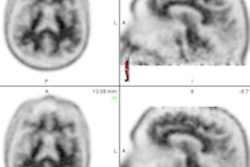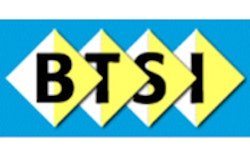New clinical indications and positive reimbursement for cardiac studies could cause PET radiopharmaceutical sales to grow more than tenfold in the U.S. in coming years, to more than $4 billion by 2018, according to a new report from market research firm Bio-Tech Systems.
U.S. PET radiopharmaceutical sales could expand from $391.8 million in 2010 to $4.31 billion in seven years. The report also projects that U.S. SPECT radiopharmaceutical sales will increase, although not as dramatically, from $758 million in 2010 to $1.68 billion by 2018.
The study, authored by Marvin Burns, president of Bio-Tech Systems, cited the addition of new products that would drive all segments of molecular imaging and create a "good platform for continued growth for both SPECT and PET."
In turn, clinicians will have more imaging options to avoid higher-risk and more-costly invasive procedures. This trend will stimulate more research and investment, adding strength and stability to newer venture companies as well as those more established in the field.
The projected growth would reverse a 9% downturn in U.S. SPECT radiopharmaceutical sales from 2009 to 2010, due to lower pricing of perfusion agents and increased use of generic sestamibi.
Tc-99m shortage
SPECT procedure volume also declined due to the technetium-99m (Tc-99m) shortage from the absence of molybdenum-99 production last year. The situation stabilized in the third quarter of 2010 when two nuclear reactors, including Atomic Energy of Canada's nuclear facility in Chalk River, Ontario, went back online.
While there has been a decline in the number of SPECT myocardial perfusion procedures recently, the decrease has stabilized, Burns noted, with most Tc-99m users weathering the shortage with no long-term adverse effect.
"Supplies are now plentiful, although prices have increased, because the supply contracts are now negotiated on a short-term basis," the report stated. "The market has easily absorbed these increases because of the savings from the use of generic sestamibi and decline in price of myocardial perfusion agents."
By comparison, PET procedures increased 8.9% to 2.1 million from 2009 to 2010, with revenue increasing to $391.4 million. PET procedures have benefited from the approval of new clinical indications and favorable reimbursement for cardiology procedures. Investment has been increasing in new PET agents, and many of these products have entered late-stage development with market entry expected in the near future, the report noted.
Technology improvements
From a technology viewpoint, continuing improvements in imaging technology for both SPECT and PET have produced greater resolution and shorter imaging times. Radiopharmaceutical doses are also being reduced as a result of increased imaging efficiency. This advance makes nuclear medicine safer than many other imaging modalities that are threatened with excessive radiation and patient safety issues, according to the report.
"PET perfusion agents for cardiology will offer capabilities for diagnosing complex cases and encourage more physicians to adopt PET for cardiology applications," Burns wrote. "Cardiology PET produces better images and offers higher reimbursement than traditional cardiology SPECT."
Cardiology SPECT is also expected to experience growth from new products for imaging myocardial infarction and neuronal imbalances in patients at risk of congestive heart failure.
Also fueling market growth will be new molecular imaging modalities currently in development for apoptosis, angiogenesis, and cellular proliferation. Other agents are in the pipeline for imaging tumors not easily seen with either PET or SPECT.
New oncology products are also being developed for diagnosing and monitoring cellular response to therapy, the report added.
"These molecular imaging platforms will also have therapeutic applications, increasing their versatility and usefulness. In the long run, this will encourage more investment from biopharmaceutical companies and venture groups that will enhance future market growth," the report stated.



















